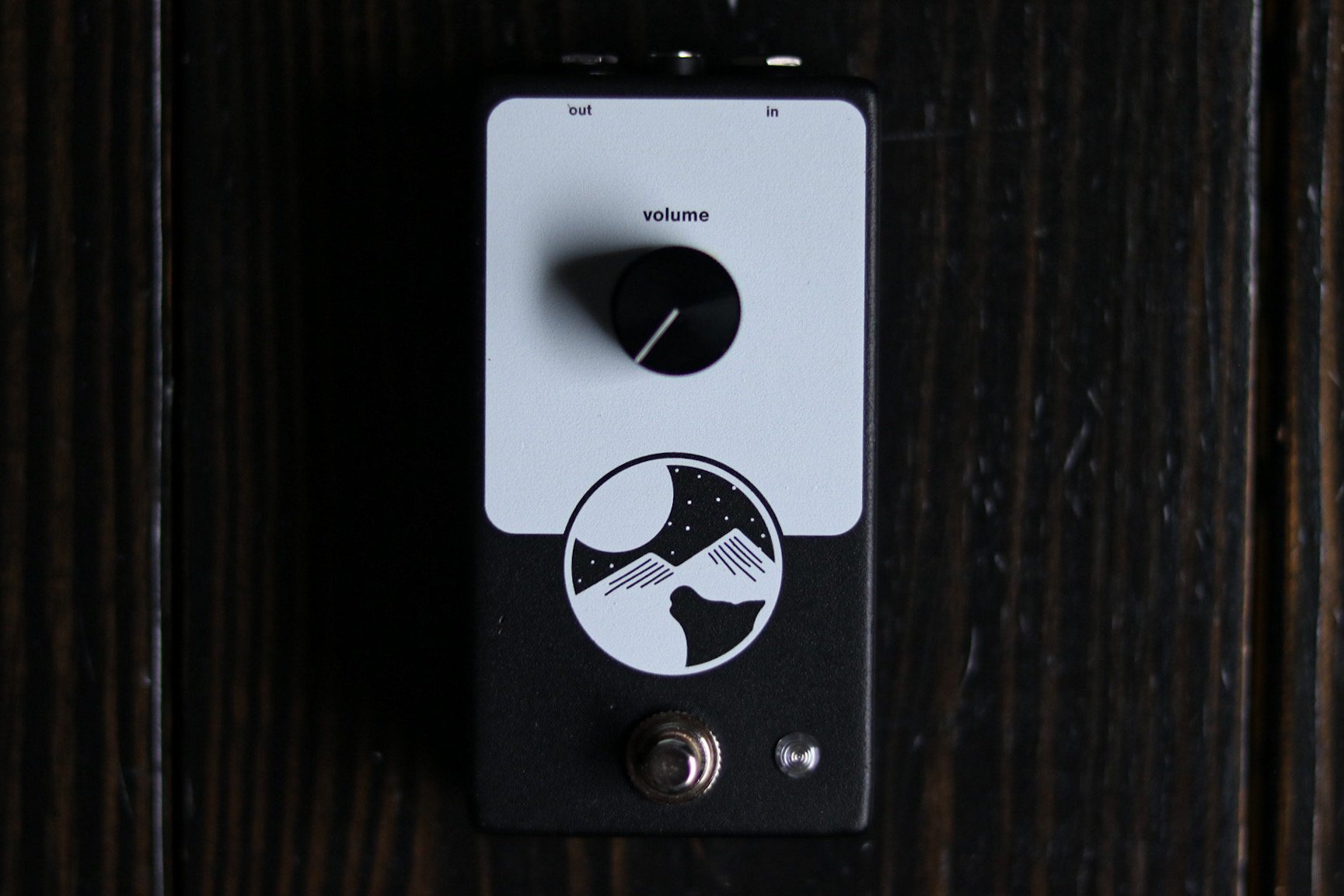First Running Wolf, then Makoyii.
Running Wolf V1, Running Wolf V2, Makoyii
Let’s Explore.
Makoyii continues the journey of Running Wolf.
Let’s explore each design iteration and figure out how we ended up here.
Running Wolf V1
Running Wolf V1
Our first and only fuzz under our previous company name, Red House Electronics (RHE). The V1 was a Fuzz Face variant designed with germanium transistors. The germanium transistors sounded great and cleaned up well with the guitar’s volume. Unfortunately, it was loaded with a ton of knobs that felt overwhelming and the germanium transistors were a pain to calibrate.
Pros: Germanium transistors that provided a range of fuzz.
Cons: Too many knobs for a fuzz and due to the germanium transistors, not every unit sounded the same.
Running Wolf V2
Running Wolf V2
The Running Wolf V2, originally released under the RHE name, carried over during the rebranding to NativeAudio. Leveraging V1’s design, we implemented silicon transistors with internal biasing. The V2 ripped and sounded great. By simplifying things, the pendulum swung too far on the V2. The one-knob layout left more to desire and the internal biasing required backplate removal, which wasn’t practical.
Pros: Great tone with a not-so-overwhelming layout.
Cons: Limited tone shaping.
Makoyii
Makoyii
Makoyii continues the journey of Running Wolf and provides the missing elements in previous iterations of Running Wolf: consistency, range, and practicality.
Designed with low-tolerance components, the Makoyii always delivers great tone, requiring no biasing or calibration. The Makoyii’s gain control works like a pre-amp and conditions your signal prior to additional amplification, providing a range of clean compression to edge-of-fuzz distortion. Finally, by leveraging the streamlined interface from our Kiaayo and War Party overdrive/distortion pedals, the Makoyii creates an endless dirt experience.
Let’s make some noise.
If you’d like to learn more about the Makoyii visit here.





